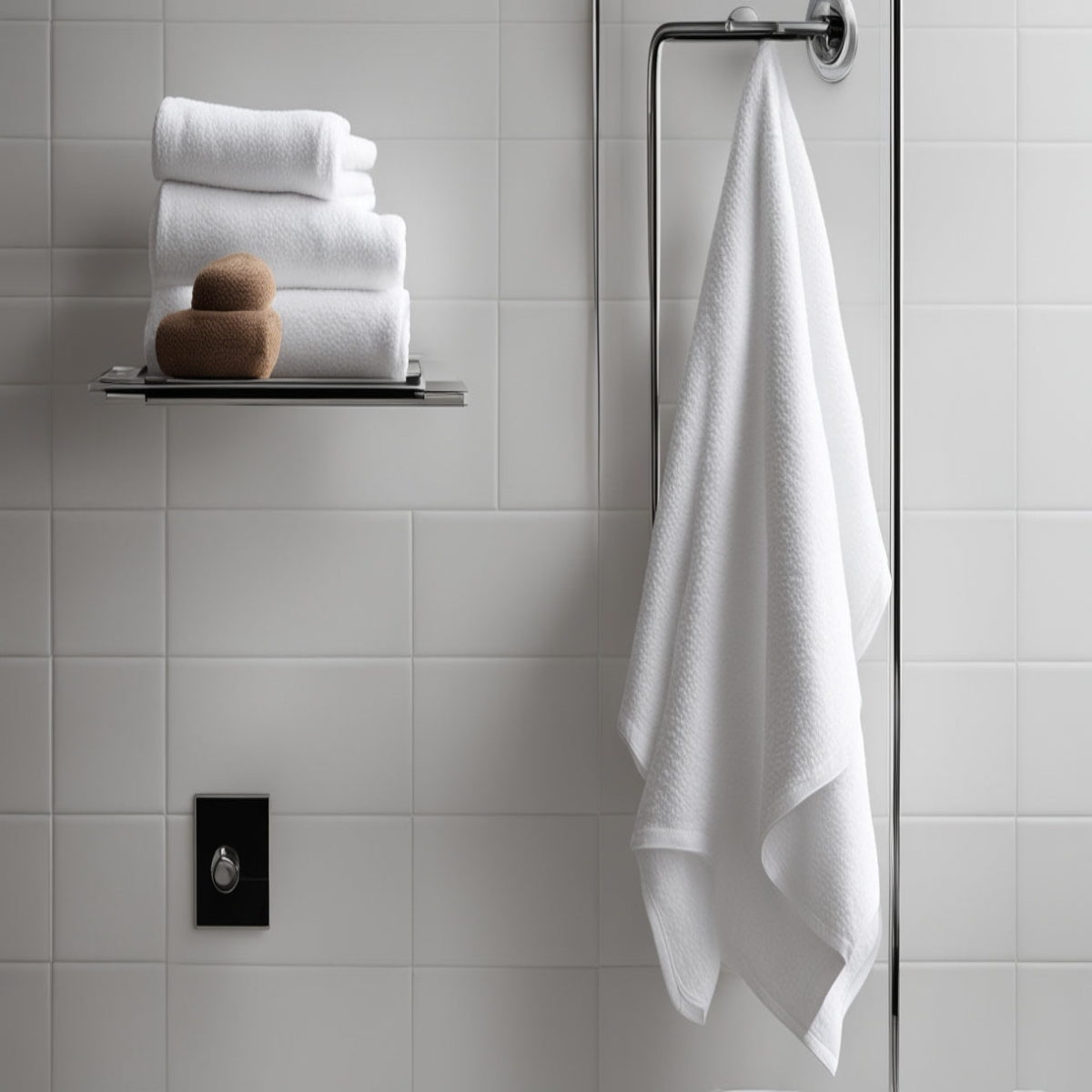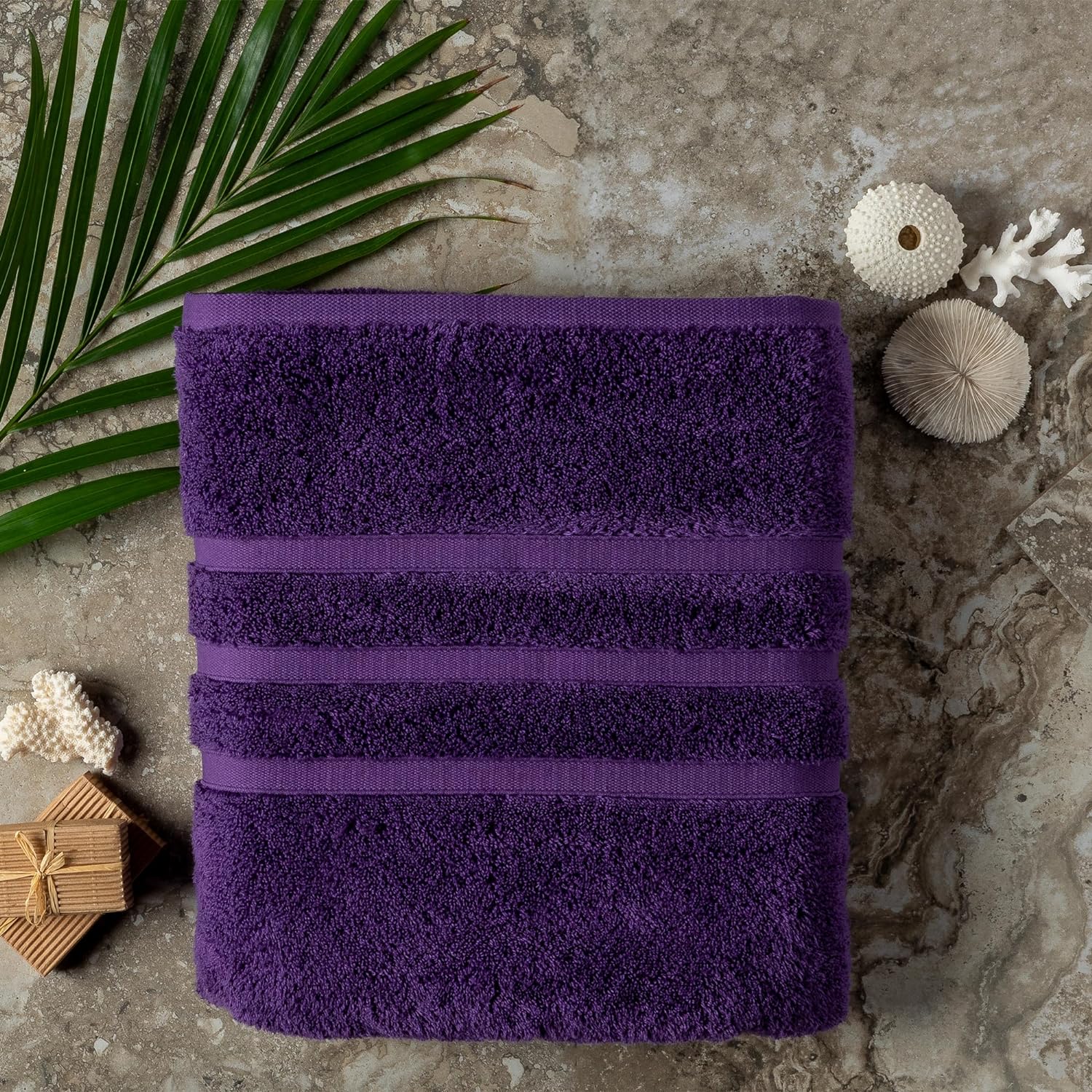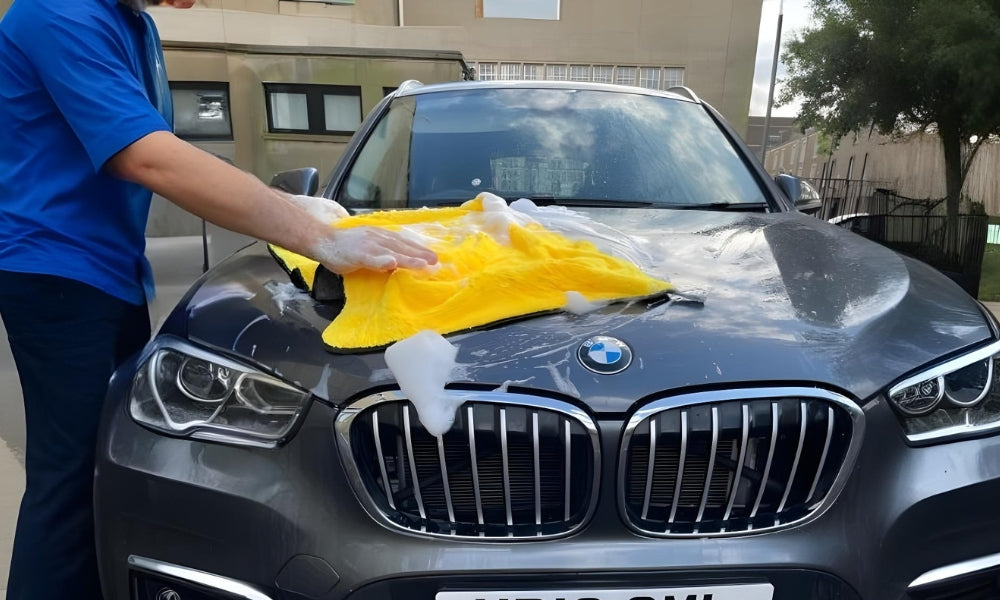Your car's paint job is more than just a pretty face – a protective layer shielding the underlying metal from the elements. Keeping that paint in pristine condition requires more than a quick rinse and dry. You wouldn't polish a diamond with sandpaper, right? The same principle applies to your car. Using the wrong cloth can lead to unsightly scratches, swirl marks, and even premature fading.
This is where microfiber cloth comes to the rescue. These technological marvels are designed to be gentle yet effective, making them the perfect tool for various car care tasks, from window cleaning to buffing, dusting, and even removing bird messes.
This guide will equip you with the knowledge to choose the perfect clothes for every job.
Understanding Microfiber Technology: Tiny Fibres, Big Impact
What makes microfiber cloths so special? It all comes down to their unique structure. The word "microfiber" itself is a clue. These clothes are made of incredibly tiny fibres, each thinner than a strand of silk. These fibres are typically a blend of two synthetic materials:
- Polyester: Known for its durability and strength, polyester fibres provide the backbone of a microfiber cloth, ensuring it can withstand countless washes and uses. They also contribute to the cloth's softness, making it gentle on delicate surfaces like your car's paint.
- Polyamide (Nylon): This material is all about absorbency. Polyamide fibres attract and hold water, making them ideal for drying your car or soaking up spills. They also enhance the cloth's cleaning power by trapping dirt and grime within their microscopic crevices.
Combining these two materials creates a cloth that's both soft and strong, absorbent and durable. But it's not just the materials themselves; it's how they are woven together. Thanks to the countless tiny fibres packed into each square inch, Microfiber cloths have a much larger surface area than traditional fabrics. This increased surface area gives them a remarkable ability to pick up dirt, dust, and microscopic particles that other cloths would miss.
When a microfiber cloth comes into contact with your car's paint, the fibres work like thousands of tiny squeegees, gently lifting and trapping contaminants without scratching the surface. This makes them far superior to abrasive materials like paper towels or cotton rags, which can leave behind swirl marks and micro-scratches that dull your car's shine.
Key Factors to Consider When Choosing a Microfiber Cloth
Not all microfiber cloths are created equal. Several factors can significantly impact their performance and suitability for specific tasks. Understanding these factors will empower you to choose the best clothes for every car care job:
- GSM (Grams Per Square Meter) measures the cloth's density or weight per square metre. Higher GSM generally means a thicker, plusher towel with more fibres and excellent absorbency. However, the ideal GSM depends on the task at hand:
-
- Lower GSM (200-350): Best for windows, glass, and interior surfaces where a lighter touch is needed.
- Medium GSM (350-500): Versatile for general cleaning, dusting, and polishing.
- Higher GSM (500-600): Ideal for drying, as they can absorb more water without becoming saturated.
- Blend (Polyester/Polyamide Ratio): The ratio of Polyester to polyamide fibres affects the cloth's properties.
-
- Higher Polyester (70/30 or 80/20): More durable and better for removing wax or polish.
- Higher Polyamide (30/70): More absorbent and better for general cleaning and polishing.
- Pile (Short vs. Long): This refers to the length of the fibres on the cloth's surface.
-
- Short Pile: Smoother and less likely to leave streaks, making it suitable for removing wax, polish, and sealant.
- Long Pile: This creates more surface area for absorbing water and trapping dirt, making it better for buffing and drying.
- Weave (Standard vs. Waffle): How the woven fibres affect the cloth's texture and performance.
-
- Standard Weave: A simple, flat weave that's versatile for most car care tasks.
- Waffle Weave: A textured weave that resembles tiny waffles. It's highly absorbent and suitable for trapping dirt, making it ideal for drying.
- Edgeless vs. Edged: Some microfiber cloths have a stitched edge. In contrast, others are cut with a hot knife to create a sealed, edgeless finish.
-
- Edgeless: Less likely to scratch delicate surfaces like paint and clear coat.
- Edged: It can be more durable but should be used cautiously on sensitive surfaces.
Matching the Right Cloth to the Job: Your Car Care Toolkit
Now that you understand the key factors that differentiate microfiber cloths let's match the right tool to each task in your car care routine. Towelogy has thoughtfully crafted a selection of towels specifically designed for each of these purposes, ensuring your car gets the best care possible:
- Window Cleaning: Reach for a low GSM (200-350) microfiber cloth with a short pile. This will prevent streaks and lint, leaving your windows crystal clear. Towelogy's "Crystal Clear" towels are an excellent choice for this task.
- Buffing: For buffing wax or sealant to a brilliant shine, you'll want a high GSM (500-600) cloth with a long pile to create friction and maximise shine. Towelogy's "Buff & Shine" towels are specifically designed for this purpose.
- General Cleaning: A medium GSM (350-500) cloth with a standard weave is your workhorse for most cleaning tasks, including removing dust, fingerprints, and light grime from interior and exterior surfaces. Towelogy's "All-Purpose" towels are a versatile option for everyday cleaning.
- Drying: After washing your car, reach for a high GSM (500-600) cloth, preferably with a waffle weave for maximum absorbency. This will help you dry your vehicle quickly and efficiently without leaving water spots. Towelogy's "Super Dryer" towels are perfect for this job.
- Detailing & Polishing: To apply wax, polish, or sealant, use a medium GSM (350-500) cloth with a short pile to ensure even application and prevent streaking. Towelogy's "Detailer's Choice" towels are designed to be gentle on your car's paint while providing the right amount of friction for polishing.
- Dusting: A medium GSM (350-500) cloth with a standard weave is ideal for dusting your car's interior and exterior. Towelogy's "Dust Magnet" towels are specially designed to attract and trap dust particles without scratching delicate surfaces.
- Bird Mess Remover: You'll want a dedicated microfiber cloth to tackle those pesky bird droppings. Towelogy's "Bird Mess Buster" towels are a must-have for any car owner who wants to protect their paint from the corrosive effects of bird droppings.
Caring for Your Microfiber Cloths: A Little TLC Goes a Long Way
Investing in high-quality microfiber cloths like those from Towelogy is an intelligent move. Still, their longevity and effectiveness depend on proper care. With a little TLC, you can extend the life of your microfiber cloths and keep them performing at their best:
Washing Instructions:
Machine Washing:
- Wash your microfiber cloths separately from other laundry items to avoid lint transfer.
- Use warm water (not hot) and a mild detergent for delicate fabrics.
- Avoid fabric softener, bleach, and dryer sheets, as these can clog the fibres and reduce their absorbency.
- Hand Washing: If you prefer hand washing, use a gentle soap and warm water. Gently agitate the cloth to remove dirt and grime, then rinse thoroughly.
Drying Tips:
- Air Drying: The best way to dry your microfiber cloths is to hang them up to air dry. This will prevent fibre damage and extend their lifespan.
- Machine Drying: If you must use a dryer, use the lowest heat setting possible. Avoid using dryer sheets, as they can leave a residue on the fibres.
Storage:
- Clean and Dry: Always ensure your microfiber cloths are clean and completely dry before storing them.
- Separate Storage: Store your microfiber cloths separately from other cleaning tools to prevent contamination.
Additional Tips:
- Don't Overuse: Avoid using the same microfiber cloth for multiple tasks. Have a dedicated cloth for each job to prevent cross-contamination.
- Inspect Regularly: Check your microfiber cloths for signs of wear and tear, such as thinning fibres or holes. Replace them as needed for optimal performance.
Following these simple care instructions, you can keep your microfiber cloths in top condition for years to come, ensuring your car's paint stays protected and looks its best.
Conclusion: Your Car Deserves the Best
Your car's paint is its first line of defence against the elements, and choosing the proper microfiber cloth is essential to preserving its beauty and longevity. By understanding the technology behind microfiber and the key factors that differentiate one cloth from another, you can make informed decisions that will protect your investment and keep your car looking its best.
Remember, not all microfiber cloths are created equal. Invest in high-quality clothes from reputable brands like Towelogy, and your car's paint will thank you. You can achieve professional-level results in your garage by matching the right clothes to the job and caring for your microfiber clothes correctly.
Whether washing, drying, buffing, or detailing the proper microfiber cloth will make all the difference.
Ready to transform your bathroom into a spa-like retreat with the finest towels? Explore our range of luxurious, soft, and durable hotel-quality towels.














Leave a comment
This site is protected by hCaptcha and the hCaptcha Privacy Policy and Terms of Service apply.